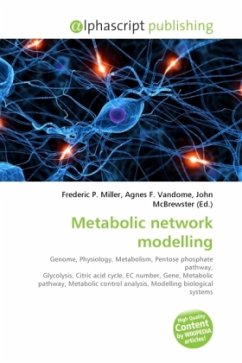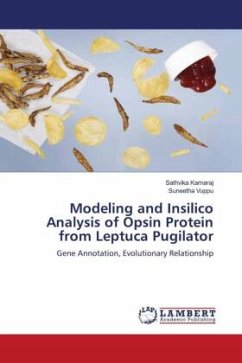
Metabolic network modelling
Versandkostenfrei!
Versandfertig in 6-10 Tagen
23,99 €
inkl. MwSt.

PAYBACK Punkte
12 °P sammeln!
Metabolic network reconstruction and simulation allows for an in depth insight into comprehending the molecular mechanisms of a particular organism, especially correlating the genome with molecular physiology (Francke, Siezen, and Teusink 2005). A reconstruction breaks down metabolism pathways into their respective reactions and enzymes, and analyzes them within the perspective of the entire network. Examples of various metabolic pathways include glycolysis, Krebs cycle, pentose phosphate pathway, etc. In simplified terms, a reconstruction involves collecting all of the relevant metabolic info...
Metabolic network reconstruction and simulation allows for an in depth insight into comprehending the molecular mechanisms of a particular organism, especially correlating the genome with molecular physiology (Francke, Siezen, and Teusink 2005). A reconstruction breaks down metabolism pathways into their respective reactions and enzymes, and analyzes them within the perspective of the entire network. Examples of various metabolic pathways include glycolysis, Krebs cycle, pentose phosphate pathway, etc. In simplified terms, a reconstruction involves collecting all of the relevant metabolic information of an organism and then compiling it in a way that makes sense for various types of analyses to be performed. The correlation between the genome and metabolism is made by searching gene databases, such as KEGG, GeneDB, etc., for particular genes by inputting enzyme or protein names. For example, a search can be conducted based on the protein name or the EC number (a number that represents the catalytic function of the enzyme of interest) in order to find the associated gene (Francke et al. 2005).












